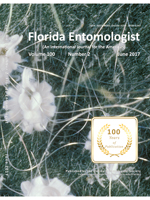The spiraling whitefly, Aleurodicus dispersus Russell (Hemiptera: Aleyrodidae), is a destructive invasive pest in many parts of the world. Topical spray and dry film contact assays were conducted to measure the toxicity of 8 plant extracts and their mixtures traditionally used as insecticides in South Asian countries such as Bangladesh, India, and Nepal. The highest mortality (100%) of adults was recorded for neem (Azadirachta indica A. Juss.; Meliaceae) (ethanol) extract (500 mg/L) at 6 h after topical spray. This was followed by 5-leaved chaste tree (Vitex negundo L.; Lamiaceae) (ethanol), sweet sop (Annona squamosa L.; Annonaceae) (acetone), water pepper (Polygonum hydropiper L.; Polygonaceae) (acetone), banyan (Ficus benghalensis L.; Moraceae) (ethanol), banyan (acetone), and crown flower (Calotropis gigantea [L.] W. T. Aiton; Apocynaceae) (ethanol) extracts at 500 mg/L at 12 h after the spray. For the dry film method, the highest mortality (100%) of adults was also recorded for neem (ethanol) extract (500 mg/L) at 18 h after the treatment. Bioassay results indicate that neem (ethanol) extract mixed with crown flower (acetone), oleander (Nerium indicum Mill.; Apocynaceae) (acetone), or sweet sop (ethanol) (in the ratio of 1:1, 1:2, and 1:3 for each plant extract) showed synergism. Neem (ethanol) extract also showed the highest mean repellency rate (93%). In conclusion, neem, 5-leaved chaste tree, sweet sop, water pepper, banyan, and crown flower extracts showed good potential to control A. dispersus, and the mixtures of these plant extracts showed synergistic activity against A. dispersus.
How to translate text using browser tools
1 June 2017
Bioassay of Plant Extracts Against Aleurodicus dispersus (Hemiptera: Aleyrodidae)
Md. Abdul Alim,
Janghoon Song,
Un Taek Lim,
Jang Jeon Choi,
Md. Alamgir Hossain

Florida Entomologist
Vol. 100 • No. 2
June 2017
Vol. 100 • No. 2
June 2017
anti-alimentación
antifeedant
aspersiones directas
direct spray
efecto mutuo
extracto mixto
mixed extract




